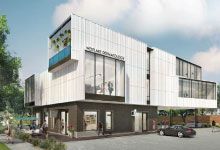

Houston Facelift Surgery
Facelift surgery, also called rhytidectomy, is a facial plastic surgery procedure that is performed to address common aging symptoms of both the face and neck. Facelift surgery tightens and smooths the face by lifting the facial skin and tissues and/or tightening lax underlying muscle. The procedure involves the surgical removal of sagging skin, loose muscle, or excess fat tissue that often causes deep lines and wrinkles, droopiness, and jowls.
Westlake Dermatology is a leading provider of facelift surgery in Texas. We offer a full range of facial plastic surgery procedures in Houston at our West University location. Our skilled plastic surgeon and caring staff are dedicated to working with patients to safely and effectively reverse the symptoms of facial aging to look their very best at any age.
What Results Can Facelift Surgery Provide?
Facelift procedures provide dramatic results that can enhance the appearance of the entire face and neck, correcting a variety of aesthetic issues including:
- Lines, wrinkles, and creases
- Drooping or sagging skin
- Jowls
- Submental fullness (double chin)
Visit our Facelift Before & After Photo Gallery to see results from real patients.
Are Facelift Results Permanent?
How long the results of a facelift will last will depend on many factors, including the type of surgery you had and whether or not you had any additional cosmetic procedures. Genetics, skin type, and age at the time of surgery also play a role in the longevity of facelift results.
While a facelift can help a patient appear years younger, it cannot stop the continuing, natural aging process. With proper aftercare, most facelift patients enjoy their results for 20 years or more.
Types of Facelift Procedures
There are several types of facelift techniques, each differing in terms of complexity and how they are used to address various types of aging symptoms. Facelift techniques range from minimally invasive (like the mini facelift, which may be ideal to address minimal symptoms experienced by younger patients) to more invasive like a deep plane facelift (which addresses more severe aging symptoms and produces a more dramatic result). The Houston locations of Westlake Dermatology offer a range of facelift options to meet the specific needs of each individual patient.
- Traditional Facelift – The traditional facelift, also known as a full facelift, is ideal for patients with significant signs of aging in the face and neck. It addresses sagging skin, deep creases, and excess fat, providing comprehensive rejuvenation. The procedure involves a series of incision made in the hairline, extending around the ears and sometimes into the scalp. Through these incisions, they lift and reposition underlying tissues, tighten muscles, and remove excess skin. The result is a smoother, firmer, and more youthful-looking appearance.
- Mini Facelift – Definitions of mini facelift vary slightly between surgeons. In general, a mini facelift addresses only the lower face, and sometimes, the neck. It does not address loose or sagging skin in the mid face or upper face. The mini facelift is considered a preventative treatment and is ideal for younger patients who have just begun to notice minor laxity in the lower face or for those who have had a full facelift in the past and are looking for a touch up. Because it is a less aggressive treatment, the mini facelift uses smaller, shorter incisions and can be performed under twilight anesthesia versus general anesthesia.
- SMAS Facelift – The SMAS Plication facelift (Superficial Musculoaponeurotic System) is an advanced, but fairly common, type of facelift procedure that addresses the lower two thirds of the face. By targeting the supporting layers of facial tissue, the SMAS facelift can achieve effective, long-lasting facial rejuvenation results.
- Deep Plane Facelift – A deep plane facelift is an advanced technique that corrects the most severe aging in the face and neck, without resulting in a pulled-tight look. The procedure often includes neck liposuction and a neck lift. During a deep plane facelift, skin, fat and the deepest muscular layers of the face are lifted as a single unit. This addresses several areas of the face simultaneously and results in a more natural looking and longer lasting facelift.
- S-Lift – The S-Lift, or short scar facelift, focuses on lifting and tightening the lower face and neck, making it particularly suitable for patients with early signs of aging in these areas. In an S-Lift, the surgeon makes small incisions in front of the ears, resembling the shape of an “S.” Through these incisions, they lift and reposition the underlying tissues, smoothing out wrinkles and sagging skin. This technique results in minimal scarring and a faster recovery compared to more extensive facelift procedures.
Am I a Good Candidate?
The best candidates for facelift procedures are non-smokers who are in overall good health. This population is most likely to have a smooth and quick recovery, free from complications.
Candidates who are pleased with their underlying bone structure and still have some skin elasticity enjoy optimal results. Individuals who are bothered by sagging skin, deep creases, or jowls and desire a more youthful appearance are excellent candidates. Those who are not happy with their bone structure or have experienced loss of volume in the face may want to consider additional procedures such as chin restructuring, liposuction or dermal fillers.
Facelift patients are typically over 50 years old, but can be any age. Mini-facelifts, for example, are ideal for younger patients who have just begun to notice sagging skin in the lower face.
Facelift Recovery: What To Expect
Facelift recovery experiences can differ greatly based on the genetics, age, general health of the patient at the time of the procedure. The type of facelift technique performed also plays a key role as techniques requiring fewer incisions typically heal faster, while full facelifts or facelifts accompanied by additional procedures will require more recovery time.
In general, patients should expect to spend 1-2 weeks of significant downtime. During this time swelling and bruising will be greatest. You may also be wearing a compression garment or bandages.
By 3-4 weeks most swelling will have subsided, stitches will have been removed, and incisions will have begun to heal significantly. Patients are typically cleared to return to normal activity, including exercise, at around the 6-week post-surgery mark.
How To Maintain Facelift Results
To best maintain facelift results for the long term, be sure to follow your surgeon’s advice immediately following surgery. In addition, the following tips may help extend the results of your surgery.
A consistent anti-aging skin care routine will help maintain your skin’s volume and elasticity by boosting collagen and elastin. Proper skin care also keeps skin smooth and hydrated, minimizing the appearance of wrinkles.
Protect yourself from sun exposure to reduce the risk of UV damage, the number one contributing factor when it comes to visible aging.
Abstain from smoking to prevent wrinkling and discoloration. Smoking prevents oxygen and vital nutrients from reaching your skin, resulting in dullness.
Consider Botox, fillers, or other non-surgical procedures to reduce the appearance of wrinkles and help maintain volume as the signs of aging slowly start to return.
Will A Facelift Cause Scarring?
Anytime an incision is made as part of a surgical procedure, a scar will be left behind. Skilled plastic surgeons, however, will place these scars in naturally hidden locations using techniques which minimize visible, straight lines. You can help reduce the risk of visible scarring by closely following your surgeon’s post-surgical instructions.
The size and location of your scars will vary depending on the type of facelift surgery you had. Incision locations for common facelift surgeries include the following:
- Mini Facelift: Incisions are smaller and shorter, located in the hairline above each ear or in the natural crease behind the ears.
- Mid Facelift: Small incisions are hidden in the hairline above the ears or inside the mouth.
- S-Shaped Facelift: An S-shaped incision starts at the temple and follows the hairline toward the ear.
- Traditional Facelift: Multiple incision sites include the hairline at the temples, behind the ears and possibly in the natural creases around and in front of the ears.
- Deep Plane Facelift: Incisions are made along the hairline at the temples, extending to the hairline behind the ears.
About Westlake Dermatology Houston
Westlake Dermatology is a leading provider of plastic surgery procedures in Texas. Our Houston team is dedicated to providing the best care to our patients at our two locations. We use the latest techniques in our state-of-the-art facilities to ensure patients safely achieve their desired end results.
Our Houston Locations

West University
2132 Bissonnet St. Suite 200
Houston, Texas 77005281.203.0600
Meet Our Houston Plastic Surgeons
- Michael Streitmann, MD: Dr. Streitmann is dually board certified by the American Board of Plastic Surgery and the American Board of Otolaryngology (Ear, Nose, and Throat Surgery). He believes in a patient focused approach with an emphasis on obtaining a true connection with his patients. Dr. Streitmann sees patients at our West University location.
Request A Facelift Surgery Consultation in Houston
Ready take the next step? Schedule your consultation online or contact us for more information.

Additional Facelift Resources
- Exercising After Facelift Surgery: What to Expect
- Facelift Incision Placement & Scars
- Full Facelift vs. Mini Face Lift: What’s the Difference?
- 10 Questions To Ask Before A Facelift (And Why To Ask Them)
- Male vs. Female Facelift: What’s The Difference?
- How Long Does A Facelift Last?
- The Pros and Cons of a Mini Facelift
- Facelift Recovery: Tips + What To Expect
- 5 Common Facelift Myths Debunked
- Do I Need Dermal Fillers Or A Facelift?
- All About Mid-Facelift Surgery
- Facelift vs. Neck Lift: What’s the difference?
- Type of Facelifts: Which Technique Is Right For You?
- ASPS Overview of Facelift Surgery
- Facelift: How Much Younger Can You Look?
- Understanding Facelift Surgery – AAFPRS
- MedlinePlus Research on Facelift